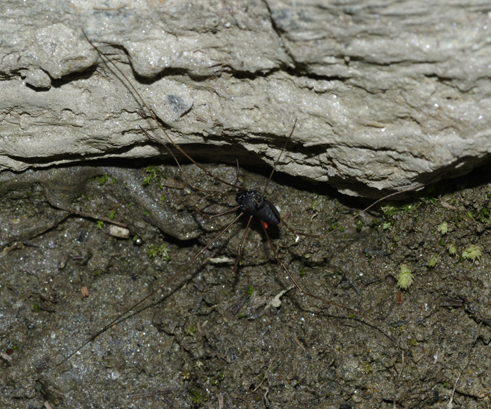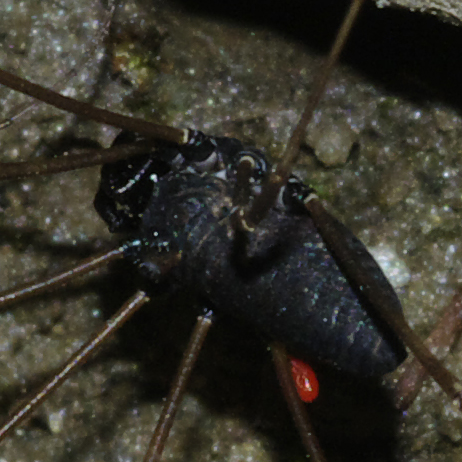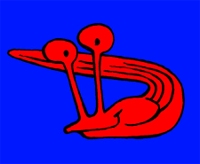|
|
|
|
|
Galleria Tassonomica
di
Natura Mediterraneo
|
 ATTENZIONE! Con tutti gli opilionidi è estremamente importante vedere l'oculario e la zona di fronte ad esso. Questo è vero in particolare per gli opilionidi a zampe corte nei quali il tridente è una caratteristica distintiva. ATTENZIONE! Con tutti gli opilionidi è estremamente importante vedere l'oculario e la zona di fronte ad esso. Questo è vero in particolare per gli opilionidi a zampe corte nei quali il tridente è una caratteristica distintiva.
Si dovrebbe misurare la lunghezza del corpo. Se è possibile scattare fotografie prese dall'alto e di lato. Naturalmente non dovrebbe mancare una semplice foto dorsale. Anche se sono la caratteristica più notevole degli opilionidi, le zampe possono essere ignorate senza problemi perché non hanno virtualmente alcun ruolo nella determinazione.
Per la maggior parte degli Opiliones si arriva ad una determinazione già con le foto. Le eccezioni sono Nemastomatidae ('i piccoli neri') e soprattutto Trogulidae, per i quali è meglio l'analisi del DNA.
|
|
| Autore |
 Discussione Discussione  |
|
|
S M
Utente Senior
   
Città: Merano
Prov.: Bolzano
Regione: Trentino - Alto Adige

1408 Messaggi
Tutti i Forum |
|
|
S M
Utente Senior
   
Città: Merano
Prov.: Bolzano
Regione: Trentino - Alto Adige

1408 Messaggi
Tutti i Forum |
 Inserito il - 09 novembre 2010 : 01:15:51 Inserito il - 09 novembre 2010 : 01:15:51


|
Immagine:

245,9 KB |
 |
|
|
S M
Utente Senior
   
Città: Merano
Prov.: Bolzano
Regione: Trentino - Alto Adige

1408 Messaggi
Tutti i Forum |
 Inserito il - 09 novembre 2010 : 01:17:01 Inserito il - 09 novembre 2010 : 01:17:01


|
Immagine:

179,12 KB |
 |
|
|
Cmb
Moderatore
    

Città: Buers
Prov.: Estero
Regione: Austria

12844 Messaggi
Flora e Fauna |
 Inserito il - 28 gennaio 2012 : 16:14:47 Inserito il - 28 gennaio 2012 : 16:14:47


|
Bel esemplare nero - forse nuovo per il forum?!
Link
Bilder 2 und 3 sind sicherlich P. pinetorum (m, vgl. u.a. Wijnhoven & Noordijk 2011: Fig. 2).
Ja, das sehe ich auch so. Hier das Dokument: Link
"La distinction des espèces de limaces est extrêmement difficile,
et aucun zoologiste n’est encore parvenu à quelque chose
d’un peu satisfaisant sous ce rapport."
H. M. DUCROTAY DE BLAINVILLE 1823
Vieni nel mondo dei Limax d'Italia

|
 |
|
|
MaggieGrubs
Moderatore
   
Città: Milano
Prov.: Milano
Regione: Lombardia

3701 Messaggi
Tutti i Forum |
 Inserito il - 30 gennaio 2012 : 18:39:32 Inserito il - 30 gennaio 2012 : 18:39:32


|
TRAD
- foto 2 e 3 P. pinetorum (maschio, vedi: Wijnhoven & Noordijk 2011: Fig. 2).
- Sì sembra anche a me. Il documento è qui: Link
|
Summary
Platybunus pinetorum, another range-expanding harvestman in the Netherlands (Opiliones: Phalangiidae)
Platybunus pinetorum (C.L. Koch, 1839) is a montane species, previously occurring locally in Central European countries. This species has been found in the Netherlands for the first time in 1998. Ten years later, this harvestman is in a process of expanding its range to different parts of the country. This is illustrated by a map showing the presently known localities. This same trend can be witnessed in Germany and Belgium. It seems to favour all kinds of forests and occasionally occurs in gardens fringing these forests. By describing the characteristics of the male, female and juvenile we hope to receive more sightings, allowing for a detailed reconstruction of the colonisation trend in the Netherlands. |
|
Modificato da - Cmb in data 30 gennaio 2012 23:48:57 |
 |
|
|
S M
Utente Senior
   
Città: Merano
Prov.: Bolzano
Regione: Trentino - Alto Adige

1408 Messaggi
Tutti i Forum |
 Inserito il - 02 marzo 2012 : 22:43:16 Inserito il - 02 marzo 2012 : 22:43:16


|
Grazie per l'identificazione.
Le foto rappresentano tutte lo stesso esemplare (la terza è un ritaglio della seconda).
Ciao
S.M. |
 |
|
| |
 Discussione Discussione  |
|
|
|
 Natura Mediterraneo Natura Mediterraneo |
© 2003-2024 Natura Mediterraneo |
 |
|
Leps.it | Herp.it | Lynkos.net
|

 Forum
|
Registrati
|
Msg attivi
|
Msg Recenti
|
Msg Pvt
|
Utenti
|
Galleria |
Map |
Forum
|
Registrati
|
Msg attivi
|
Msg Recenti
|
Msg Pvt
|
Utenti
|
Galleria |
Map |